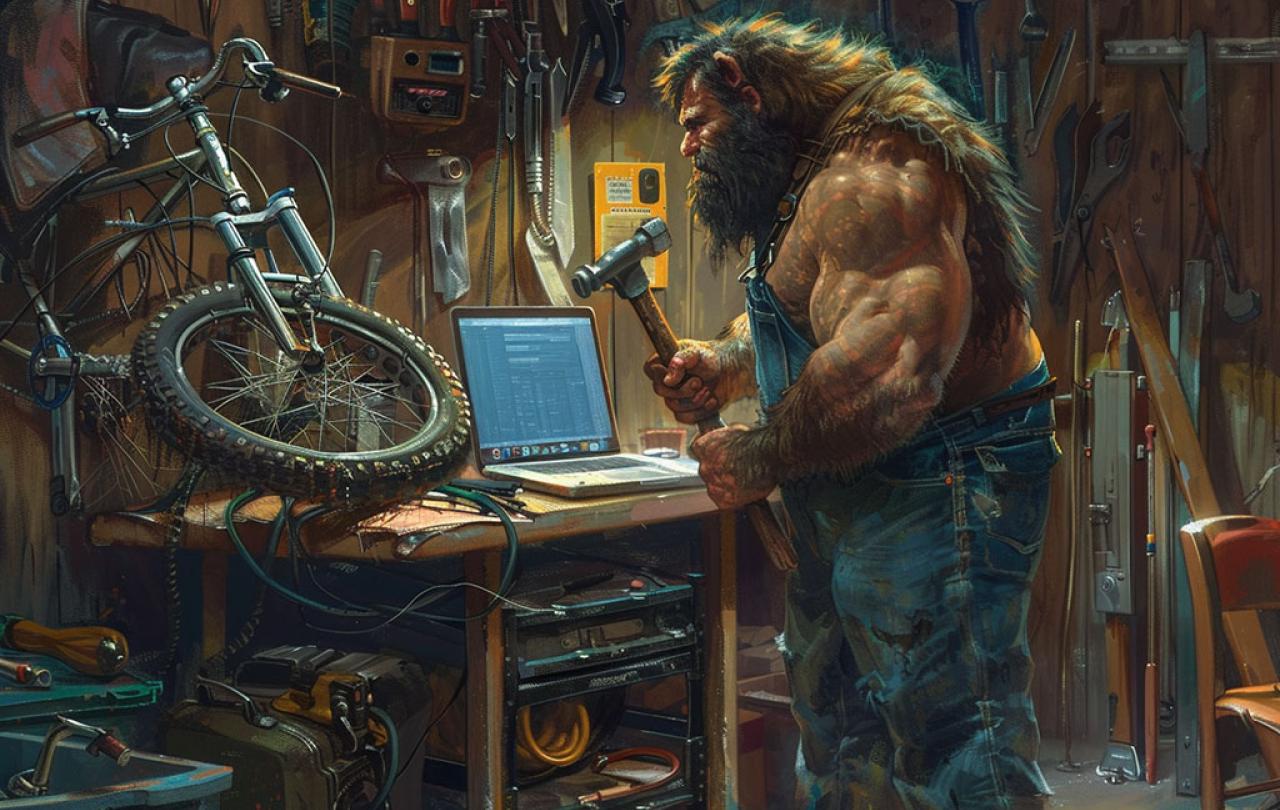
If one of the most famous rockstars on the planet is playing the best shows of his life, and no one is there to witness it – is he really playing them?
I ask because Jack White, one of the most celebrated and iconic musicians of the 21st century, is playing the best shows of his career. The thing is, barely anyone knows that they’re happening. Not because they don’t care, but because he’s made it that way.
This is White’s ‘No Name’ tour: a critically celebrated string of shows that almost nobody is going to.
And therein lies the magic.
In the summer of this year, he released his ‘No Name’ album with no press, no marketing, and no apparent plans for a tour. Instead, Jack released this body of work into the world and simply told his fans to tell their friends about it – ah, word of mouth, the marketing strategy of old.
It must have worked, because the nameless album was incredibly well received by critics and fans alike. Apparently, the ever-enigmatic Jack White has still got it. And now finally – finally - some live shows are being announced.
Kind of.
Each show is being announced only days in advance, the marketing is non-existent, the venues are tiny, and the tickets are… affordable.
What is this? Some kind of cruel trick?
It’s all so odd, so seemingly illogical, that Jack has had to confirm that this is it. This is no trick, no gimmick. This is, in fact, the tour. Reassuring his fans via social media, he wrote
‘Lotta folk asking about when we are going to announce ‘tour dates’, well, we don’t know what to tell you but the tour already started at the Legion a couple of weeks ago… People keep saying that these are ‘Pop up shows’ we’ve been playing, well, you can call them whatever you want, but we are on tour right now.’
He added,
‘These are the ‘shows.’ We won’t really be announcing dates in advance so much, we will mostly be playing at small clubs, back yard fetes, and a few festivals here and there to help pay for expenses.’
And that’s exactly what he’s been doing. One such show recently took place in Islington Assembly Hall in London – and it’s been hailed as some kind of ‘off-the-cuff wizadry’. That’s quite the review, isn’t it? What’s more impressive: it’s pretty much the only kind of review he’s been getting. I’ve dug deep, and I’m yet to find someone who was in that hall who didn’t leave it completely bewildered by how dazzling of an experience it was. Jack is disobeying all the rules, and it seems to be working in his favour. While on stage in Islington, he told the crowd,
‘This is the kind of rock’n’roll you’re not gonna get at Wembley stadium for £400’
This is an obvious swipe at Oasis’ reunion tour, which will take place next year in stadiums across the country. The tickets to these shows caused somewhat of a storm, as fans were simply priced out of what will no-doubt be a momentous string of events. And this isn’t the reality for Oasis fans alone, ticket prices across the board rose 23 per cent in 2023, which sits on top of the 19 per cent rise in prices since the pandemic. And we in the UK and Europe still have it far cheaper than those in the US. While I was at Taylor Swift’s (not at all cheap) Era’s tour earlier this year, I met a girl who had flown from New York to Cardiff, she explained that doing so was cheaper than trying to watch the same show in New York.
It’s utter madness.
Live music shows are becoming bright and shiny sensory extravaganzas, and the amount it costs to witness them is reflecting that. And listen, I’m not bashing these mega-sized shows. I go to my fair share of them. I look forward to one day telling my grandchildren about that time I nearly got Oasis tickets.
But I can’t help but feel that the real magic is happening elsewhere. It’s happening in the tiny venues, witnessed by tiny audiences, who have paid (comparatively) tiny prices. And I think Jack White’s intimate ‘No Name’ tour might be proving me right.
In 1975, Bob Dylan similarly defied all the ‘rock-star’ rules and embarked upon the now-mythic ‘Rolling Thunder Revue’ tour. For eight months, Dylan drove a tour bus (yes, he actually drove his own tour bus) full of his friends into small towns with small venues. The marketing for each show consisted of paper flyers that were handed out mere days before the event, as if a travelling carnival was about to rock up. It was unusual, to say the least. These shows were notoriously messy, and long, and changeable, and odd.
In short, they were great. Truly great.
The modesty and mystique of it all meant that these shows have passed into legend – the live recordings of these performances are regarded as some of Dylan’s very best work. And so, surely, both Dylan’s and White’s defiant tours teach us something - they teach us that there’s a good kind of small. Indeed, there is a great kind of small. They suggest that ‘big’ doesn’t necessarily (and certainly doesn’t exclusively) equate to ‘success’.
What if rumours, reviews, and recordings of a show played to 2,000 people could have more impact than a show played to 100,000? What if the intimacy and connection formed in town halls and tiny clubs rippled into the decades to come? It’s an upside-down way to think of things, but what if the greatest cultural moments were the ones barely anyone saw? What if (and stay with me here, especially you swifties. I’m one of you) these mega-tours are actually quenching creative mastery? What if the smartest thing an artist could do was defy all the rules? What if humility is the source of all greatness?
We seem to have got to a place where we’re surprised that Islington Assembly Hall could be the backdrop to Jack White doing something truly special. And so, I wonder - it’s proper counter-cultural stuff, but do we need to learn to not despise the small things?
Are Jack and Bob the odd ones, for kidding themselves into thinking that small can still be successful? Or are we the odd ones, for ever assuming otherwise?

